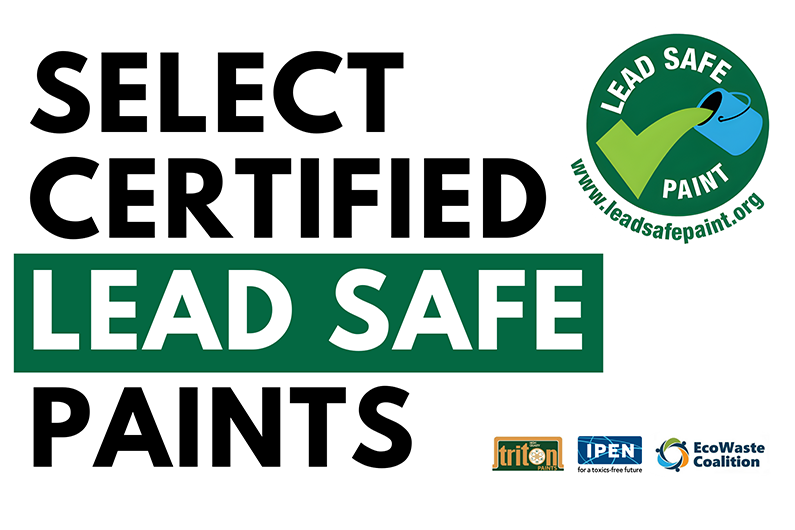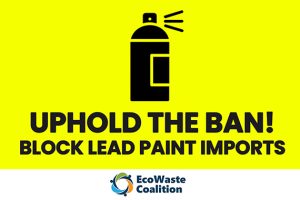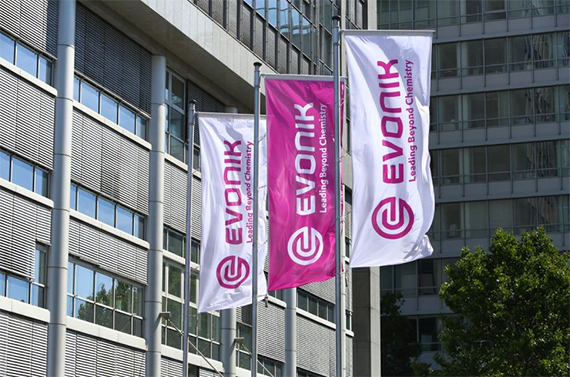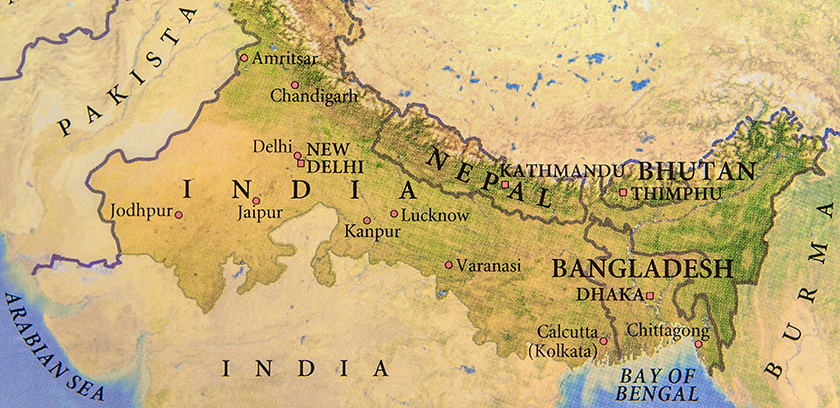More news
- West Japan Railway introduces robot for painting maintenance
- Axalta completes acquisition of The CoverFlexx Group
- BASF supports Graphit Kropfmühl, a subsidiary of AMG Critical Materials N.V., with innova...
- CHT Group Sustainability Report 2023 now available online
- Huntsman secures bluesign® Approved status for IROGRAN® TPU products

 The toxics watchdog group EcoWaste Coalition has released a list of 15 more imported paint products containing lead above the maximum limit of 90 parts per million (ppm), the strictest regulatory standard for lead in paint that is enforced in the Philippines and many other countries.
The toxics watchdog group EcoWaste Coalition has released a list of 15 more imported paint products containing lead above the maximum limit of 90 parts per million (ppm), the strictest regulatory standard for lead in paint that is enforced in the Philippines and many other countries.
Based on the tests conducted by SGS, a global testing company, the 15 spray paints obtained by the group from local online sellers and physical retail stores and initially screened for lead using an X-Ray Fluorescence (XRF) device were verified as containing lead in excess of 90ppm.
Ten of these 15 lead-containing paints incorrectly carried the “no Pb” symbol or were marked as “lead free” (Pb, for plumbum, is the chemical symbol for lead). These 10 paints plus two others were identified as “made in China” (the remaining three provided no information about their country of manufacture).
One “no Pb” paint product contained a whopping 130,000ppm of lead, while five others had lead concentrations ranging from over 29,000ppm up to over 76,000ppm.
The analyses were carried out on dried paint samples prepared by the EcoWaste Coalition and tested by SGS through inductively coupled plasma emission spectroscopy or ICP-OES, a technique used to measure elements like lead present in a sample.
“The non-stop importation, distribution and sale of lead-containing paint products justify the adoption of new measures to uphold our country’s ban on such paints,” said Manny Calonzo, Campaigner, EcoWaste Coalition. “While the government has rightly stopped the issuance of import clearance for lead chromates used in paint manufacturing, paint products containing lead additives, including some that deceptively claim to be ‘lead free,’ are able to enter our ports and get sold in the marketplace without being penalised.”
READ MORE:
“The continued sale of imported lead-containing paints put young children at risk of lead poisoning. Until such time when trade of lead paints and lead chromates, the main lead-based ingredient in paint, is controlled, more children will get exposed to this neurotoxin,” said Jeiel Guarino, Global Lead Paint Elimination Campaigner, International Pollutants Elimination Network (IPEN).
Both the EcoWaste Coalition and IPEN are encouraging the Government of the Philippines to follow the action taken by the Government of Cameroon towards the listing of lead chromates as hazardous chemicals in the Rotterdam Convention, which will then subject these lead compounds and the paints containing them under the treaty’s Prior Informed Consent (PIC) procedure.
The Government of Cameroon, with support from the environmental health group CREPD and IPEN, recently submitted a notification to the Secretariat of the Rotterdam Convention nominating lead chromates for a treaty listing.
If listed in the said treaty, companies exporting lead chromates or paints containing them may not ship these commodities to a country that has not consented to receiving them. Also, countries can use the PIC rules to restrict or prevent the entry of lead chromates and paints that contain them.
According to the groups, the listing of lead chromates in the Rotterdam Convention will help towards the effective enforcement of DENR Administrative Order No. 2013-24, or the Chemical Control Order (CCO) for lead and its compounds, banning lead in the manufacture of paints and other similar surface coatings. Under the CCO, decorative paints containing lead were phased out from 2013 to 2016, while lead-containing industrial paints were phased out from 2013 to 2019.
Despite the ban, dangerous high lead content measured at 130,000ppm was detected on the yellow Korona Spray Paint purchased by the EcoWaste Coalition from a retail outlet. The orange, lemon yellow and grass green variants of this paint were also found to contain excessive lead at 76,300ppm, 73,200ppm and 50,000ppm in that order. Lower lead levels – 431 ppm, 373 ppm and 280 ppm – were found on the rose pink, signal red and violet colors of Korona Spray Paint, which carried the “no Pb” pictogram.
Three variants of Sinag Paint Aerosol, which are marked “lead free,” were confirmed to be lead-containing paints. A deep yellow paint had 29,600 ppm, while the jade green and orange red colours had 9,440ppm and 8,860ppm.
Three samples of KRX Aerosol Spray, orange, grass green and yellow, tested with 9,560ppm, 7,690ppm and 7,570ppm of lead, respectively.
Finally, two colours of Anton Spray Paint, canary yellow and grain yellow, were found to contain 37,500ppm and 1,320ppm of lead.
None of these lead-containing paints are manufactured, imported or distributed by companies belonging to the Philippine Paint & Coatings Association, Inc. (PPCAI), a partner of the UN-backed Global Alliance to Eliminate Lead Paint (Lead Paint Alliance), along with the Pacific Paint (Boysen) Philippines, Inc., Department of Environment and Natural Resources – Environmental Management Bureau (DENR-EMB), IPEN and the EcoWaste Coalition.







